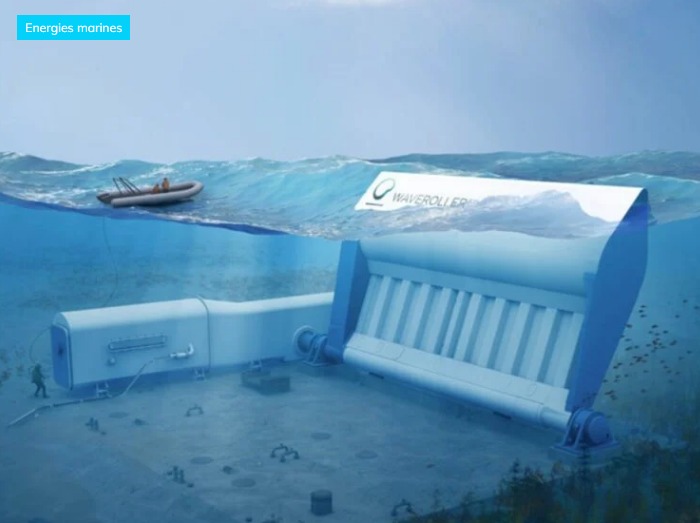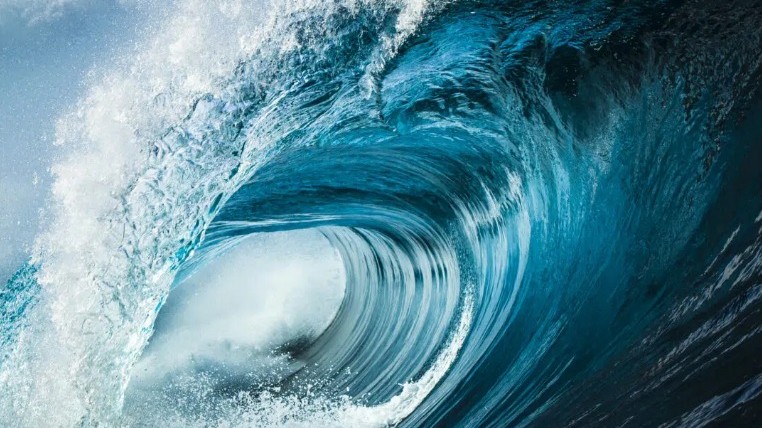In the family of renewable energies, wave energy is lagging behind and is even being surpassed by tidal energy. But the Finnish company AW Energy aims to change that with its concept called WaveRoller. In fact, it is soon to be deployed in Namibia.
Could it be that AW Energy, the Finnish company, is the chosen one to democratize wave energy? The Finnish company seems to be on track to be among the first to commercialize an effective system for generating electricity from waves. Its method, called WaveRoller, relies on the phenomenon of the tide, the perpetual ebb and flow, easily predictable, found along all the world’s coastlines. The startup offers three distinct unit types, with power ranging from 350 kW to 1 MW, which can be connected to form wave farms.
Designed to be positioned within 2 kilometers of the shore, at depths ranging from 8 meters to 20 meters, these units have the advantage, according to its designers, of being particularly efficient and above all, easy to install. After successful initial trials off the coast of Portugal, AW Energy will continue its development in Namibia and establish a wave farm on the coast of Swakopmund, which is expected to support the development of green hydrogen production in the country.
Wave energy, a challenging resource to harness
Wave energy has great potential, as the energy that could be derived from it is estimated at 30,000 TWh per year, according to the Techniques de l’Ingénieur. At the continental level, the European Union hopes to derive 10% of its energy production from it by 2050, equivalent to the consumption of 40 million households.
Projects and prototypes are multiplying, such as Seaturns and its cylindrical buoy, or DIKWE and its wave dike, to name just a few French projects. However, very few projects reach a quasi-commercial production level. There is the installation inaugurated by Eco Wave Power at the port of Jaffa, in Israel, but the installation power is limited to only 100 kW.
The limited development of this sector is partly due to the complex dynamics of waves, which make their energy difficult to capture. Additionally, due to their underwater positioning, this type of equipment is subject, like tidal turbines, to a particularly challenging environment.
Source: revolution-energetique




